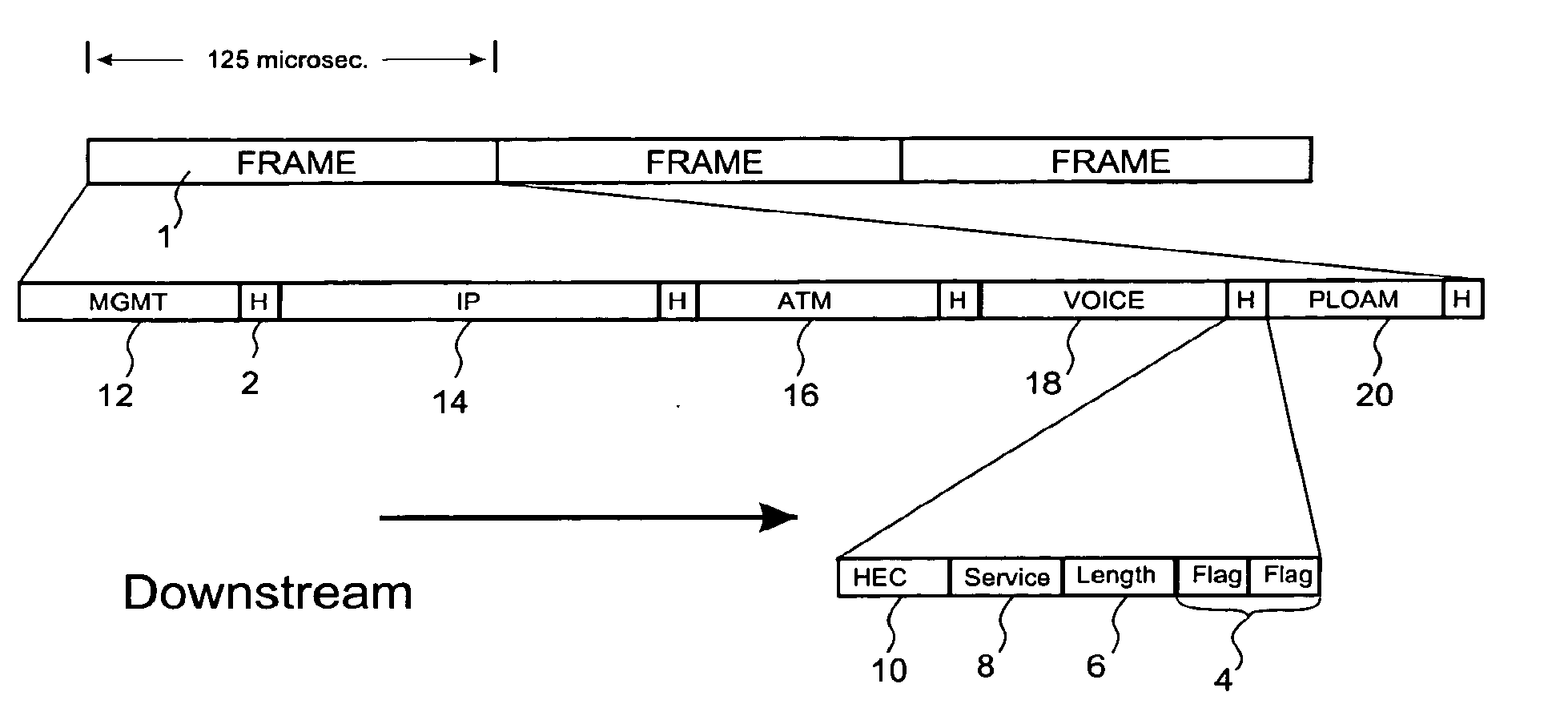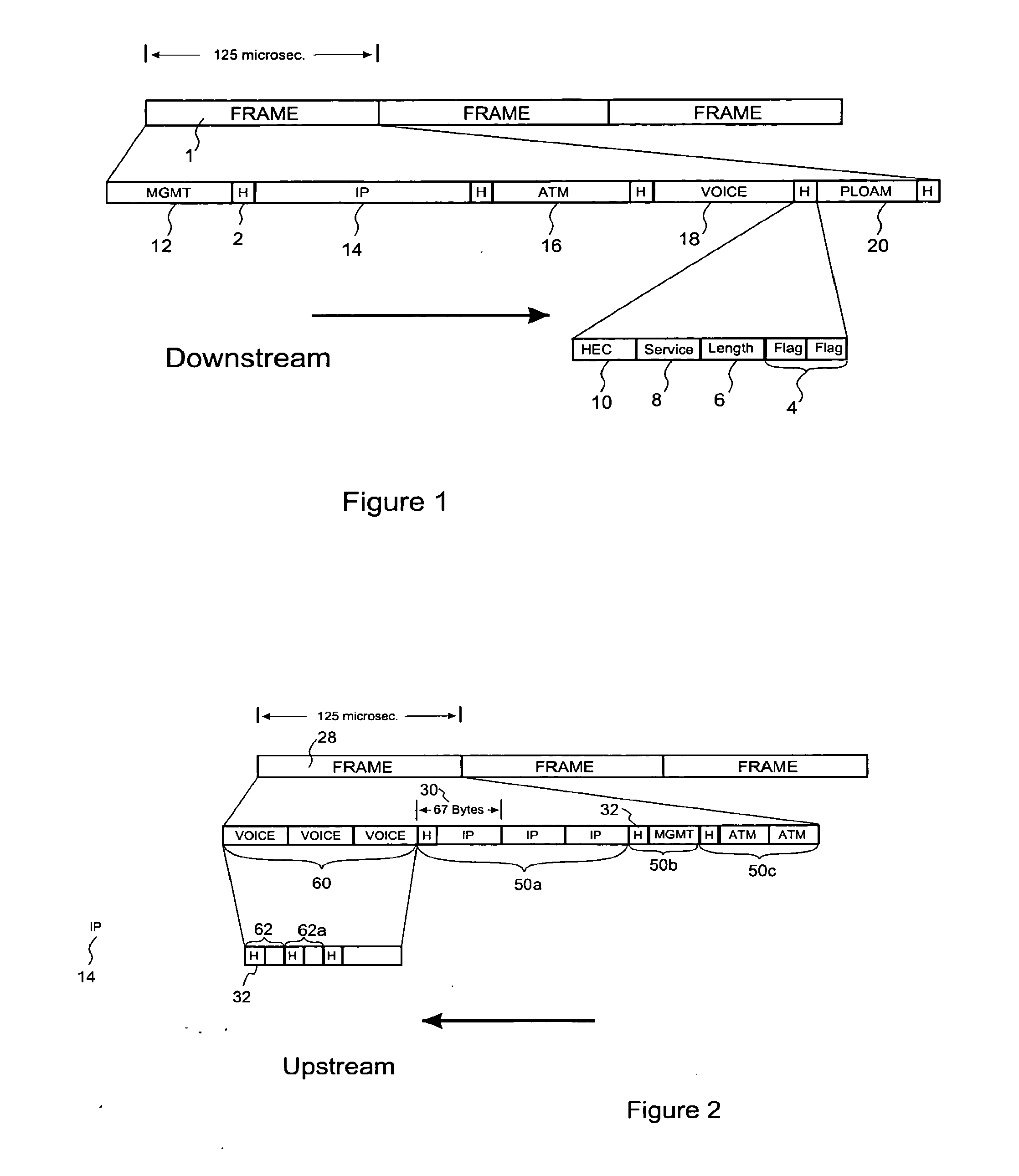Protocol for native service transport over point-to-multipoint passive optical networks
a passive optical network and native service technology, applied in the field of high-speed data communication, can solve the problems of adding significant overhead, requiring a significant amount of work to wrap and unwrap, and a rather cumbersome way of providing service transportation
- Summary
- Abstract
- Description
- Claims
- Application Information
AI Technical Summary
Benefits of technology
Problems solved by technology
Method used
Image
Examples
Embodiment Construction
[0039]In a preferred embodiment according to the present invention, both the LT and the NT's transmit bits at a rate of 622.08 million bits per second (mpbs), divided into frames of 125 microseconds (1). Alternative embodiments may transmit at 155 mbps, or any other bandwidth desired.
[0040]In the downstream direction the LT broadcasts all service information, such that each NT receives all of the information. In a preferred embodiment a method known to those skilled in the art called churning is used to encrypt downstream data to protect service information intended for one NT from being read by others. In alternative embodiments of the current invention other data protection methods may be used, or no protection may be used at all.
[0041]In each downstream frame (1) the LT broadcasts all information of a given service type together, in one block. In a preferred embodiment the LT broadcasts a 5-byte header (2) before each service block. This header comprises a one byte double flag (4...
PUM
 Login to View More
Login to View More Abstract
Description
Claims
Application Information
 Login to View More
Login to View More - R&D
- Intellectual Property
- Life Sciences
- Materials
- Tech Scout
- Unparalleled Data Quality
- Higher Quality Content
- 60% Fewer Hallucinations
Browse by: Latest US Patents, China's latest patents, Technical Efficacy Thesaurus, Application Domain, Technology Topic, Popular Technical Reports.
© 2025 PatSnap. All rights reserved.Legal|Privacy policy|Modern Slavery Act Transparency Statement|Sitemap|About US| Contact US: help@patsnap.com


